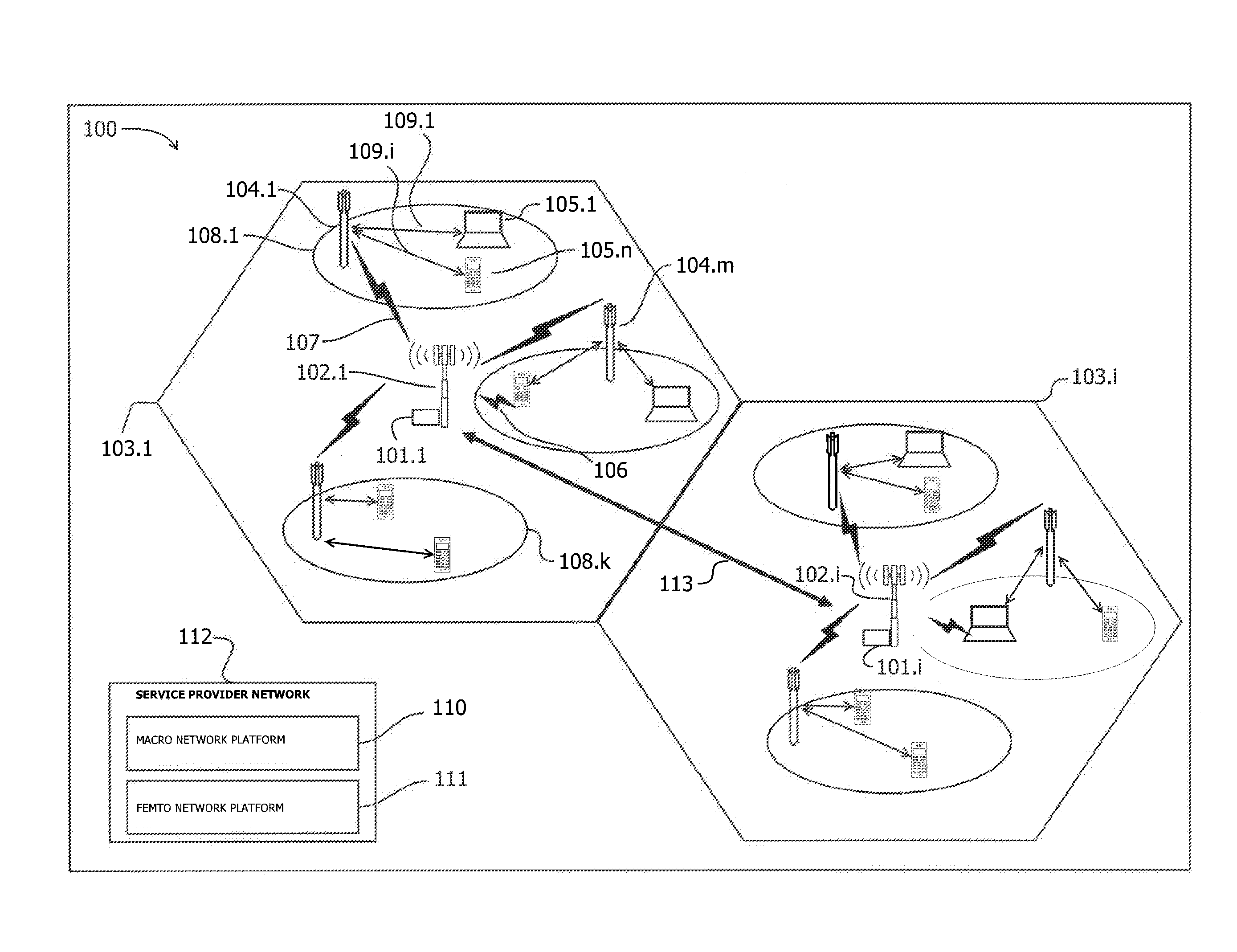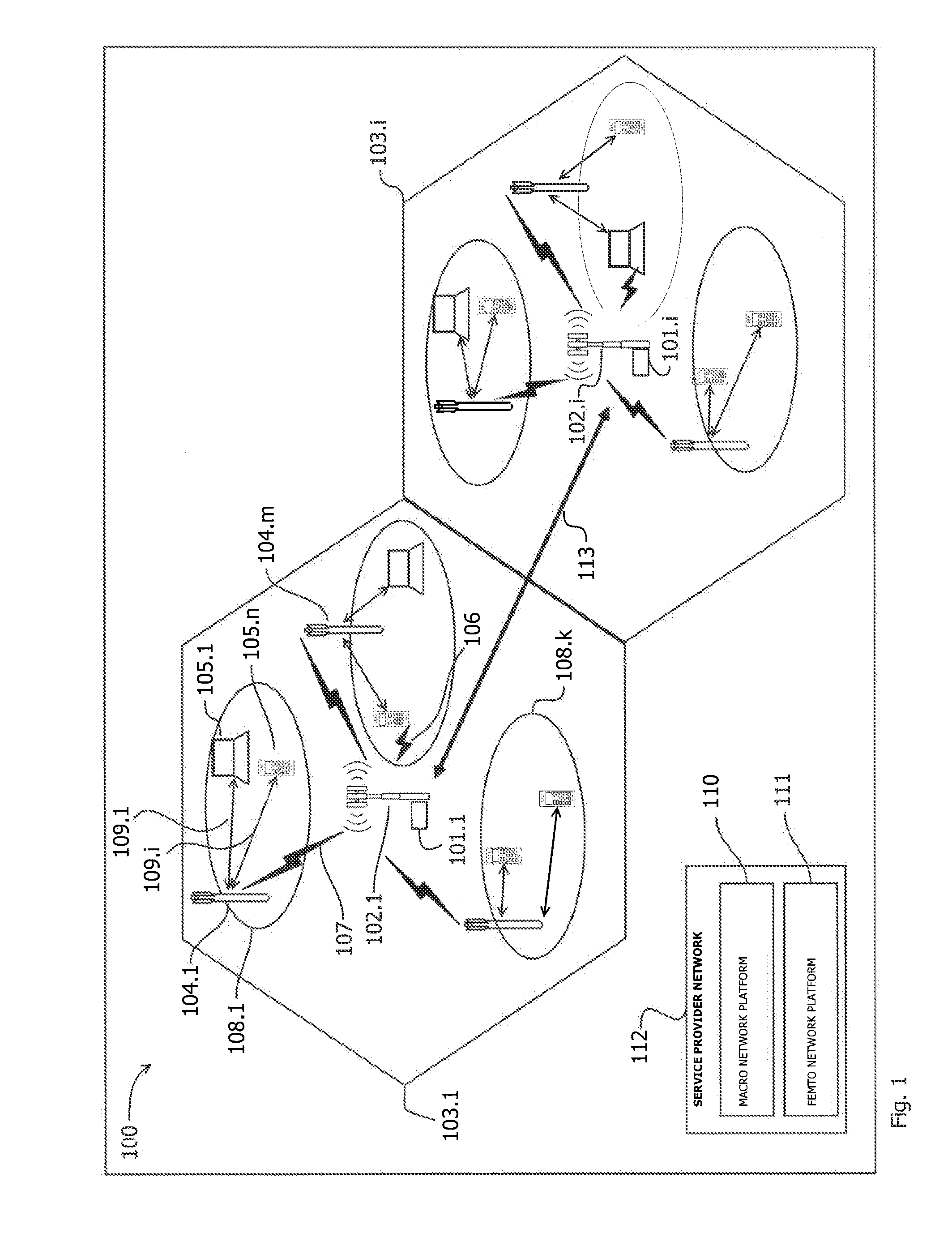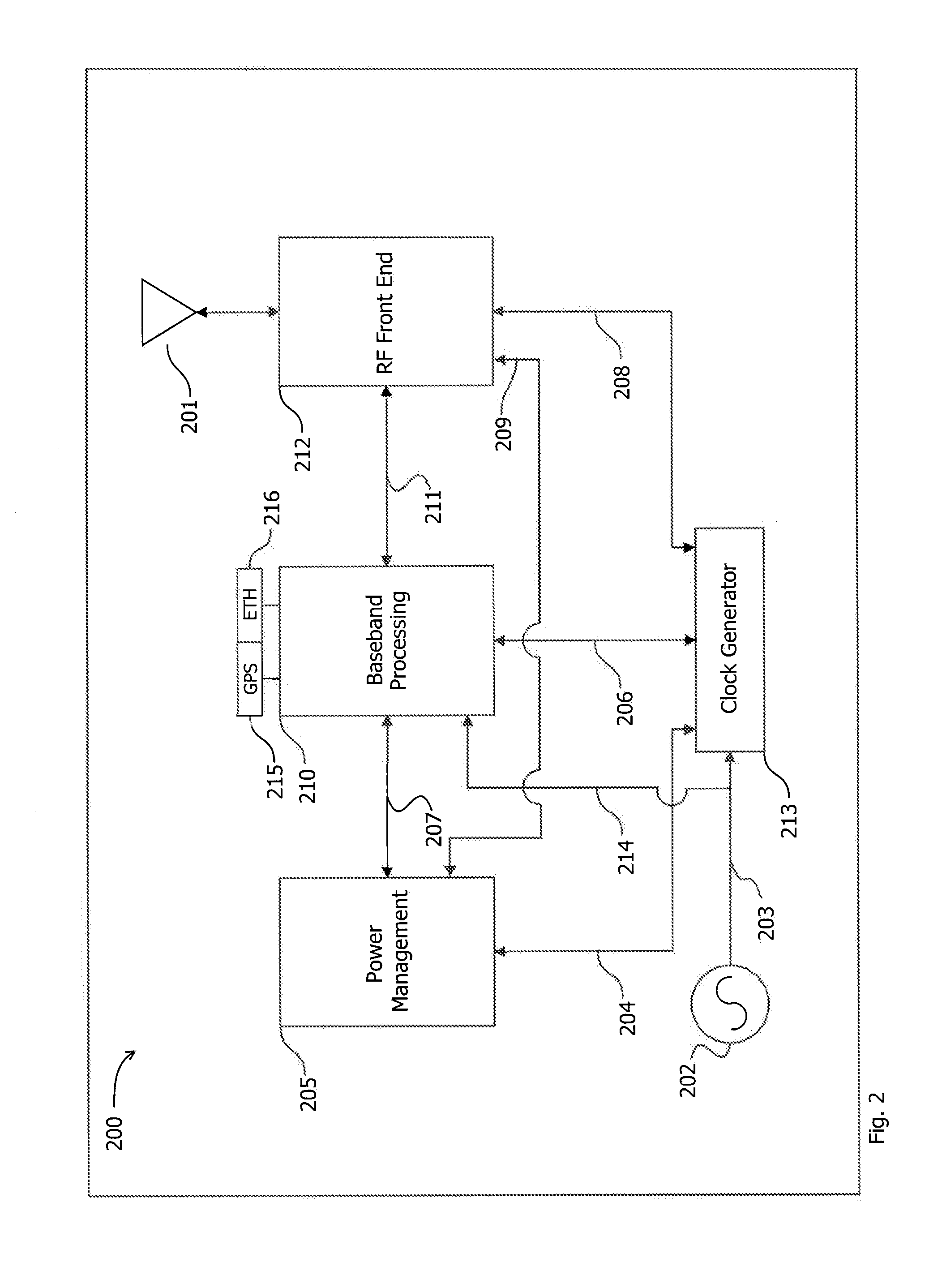Small Cell Network Self-Synchronization
a network and small cell technology, applied in the field of network communication, can solve the problems of hetnet cells, poor performance, and more cost sensitiv
- Summary
- Abstract
- Description
- Claims
- Application Information
AI Technical Summary
Benefits of technology
Problems solved by technology
Method used
Image
Examples
first embodiment
[0059]FIG. 5 illustrates an operation of a self-synchronization wireless environment in accordance with the invention. Various cell members of a wireless environment are illustrated as hexagons and constitute a wireless environment 420. For purposes of clarity, the cell members constituting 420 are illustrated as physically adjacent to one another and should be considered as having overlapping coverage between adjacent cell members. However, as previously discussed in this disclosure, physical proximity of the cell members is not required according to aspects of the invention, nor is wireless communication amongst the members needed for the SSN to function. The wireless environment 420 can be any shape or size, and cell members can have various communication ranges that are different from one another based on transmission power, amplifier gain, antenna type, number of antennas, antenna gain, etc. The wireless environment 420 can represent an exemplary embodiment of the wireless envi...
second embodiment
[0064]FIG. 6 illustrates an operation of the self-synchronization wireless environment in accordance with the invention. In this instance, center cell member 429 is the first cell in the wireless environment 420 to obtain a reliable CACL value. This can be from analysis of the convergence history log, an advantageous location allowing cell member 429 to lock onto a reliable source, or signal received through a network controller, for example. It should be noted that the center cell member 429 can also have a higher CACL due to the fact that it communicates with additional neighboring cell members, even if those members themselves do not have reliable oscillator sources, which will be discussed in greater detail with reference to FIG. 7.
[0065]Steps (a) through (f) illustrate the updating procedure associated with each cell member's CACL value throughout the convergence procedure. Similar to FIG. 5, the CACL values of each member cell are shown as propagating outward from the most rel...
third embodiment
[0067]FIG. 7 illustrates an operation of the self-synchronization wireless environment in accordance with the invention. In FIG. 7, the wireless environment 420 initially starts at step (a), in which no cell member has found a reliable oscillator source, and each CACL value is set to 0. This might be the case, for example, when a new set of femto cell access points installed at an indoor location, no convergence history has yet to be recorded, and none of the cell members have access to a macrocell network, GPS, or broadband network time information. The wireless environment 450 can represent an exemplary embodiment of the wireless environment 100 and / or the wireless environment 300.
[0068]It should be noted that crystal oscillator sources have manufacturing tolerances as previously discussed in this disclosure. Although each crystal oscillator component is manufactured to resonate at a specific nominal frequency, limitations exist in the manufacturing process. These limitations resu...
PUM
 Login to View More
Login to View More Abstract
Description
Claims
Application Information
 Login to View More
Login to View More - R&D
- Intellectual Property
- Life Sciences
- Materials
- Tech Scout
- Unparalleled Data Quality
- Higher Quality Content
- 60% Fewer Hallucinations
Browse by: Latest US Patents, China's latest patents, Technical Efficacy Thesaurus, Application Domain, Technology Topic, Popular Technical Reports.
© 2025 PatSnap. All rights reserved.Legal|Privacy policy|Modern Slavery Act Transparency Statement|Sitemap|About US| Contact US: help@patsnap.com



